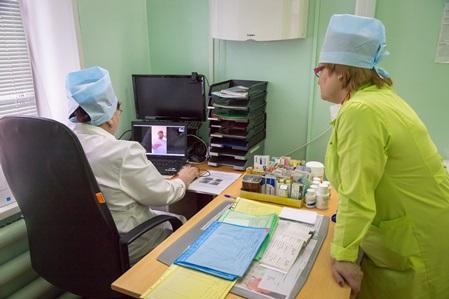The European Forum of National Nursing and Midwifery Associations (EFNNMA) is the voice of nursing and midwifery within WHO European Region.Working in partnership and strategically with WHO and other key stakeholders we aim to influence health policy, improve the quality of health services and the health of people across the 53 Member States of the Region. We are passionate advocates of the central and unique contribution that Nurses and Midwives make to individual and population health and well-being across Europe and are committed to ensuring both professions are supported to deliver excellence in their practice. As the nature of care changes we believe that strengthening and developing the nursing and midwifery workforce through the provision of lifelong learning and research delivers excellence in public health and people-centered healthcare.
Improving TB patient care in the Russian Federation with video-observed treatment

To help tuberculosis (TB) patients keep to their gruelling treatment regimens, WHO recommends that the intake of medicines is observed, in person, by a health-care worker, to support the patient in taking the medication regularly. However, ensuring daily face-to-face contact at a health facility can be challenging for both patients and health service providers. Digital technologies, such as video-observed treatment (VOT) can help meet this challenge.
In 2016, the city of Tomsk in Siberia, Russian Federation, started supporting TB patients using VOT, which allowed patients to take TB drugs under the care of a nurse via video calling software on smart phones. Each patient signs an informed-consent form to begin VOT and agrees to be available for their daily session in a quiet room. Based on the agreed schedule, a health worker initiates the call. The health worker also advises the patient on the appropriate storage of medicines, which is an important aspect of treatment success.
The programme started with 6 patients and has grown to 88. Following the example of Tomsk, VOT is now available in other regions of the country, including Tyumen, Voronezh, Vladimir, Ivanovo and Arkhangelsk oblasts.
This treatment approach is considered a step forward in making care more people-centred and is valued by patients and nurses alike. VOT has been shown to improve access to TB treatment, support regular intake of drugs and treatment adherence, decrease the risks of occurrence of drug resistance and the spread of infection, and improve the overall quality of life for patients. It can decrease the financial burden for the health system, and for patients and their families, as patients no longer have to travel to a health centre every day for directly observed therapy. No breaks in treatment regimens have been reported since the launch of VOT.





